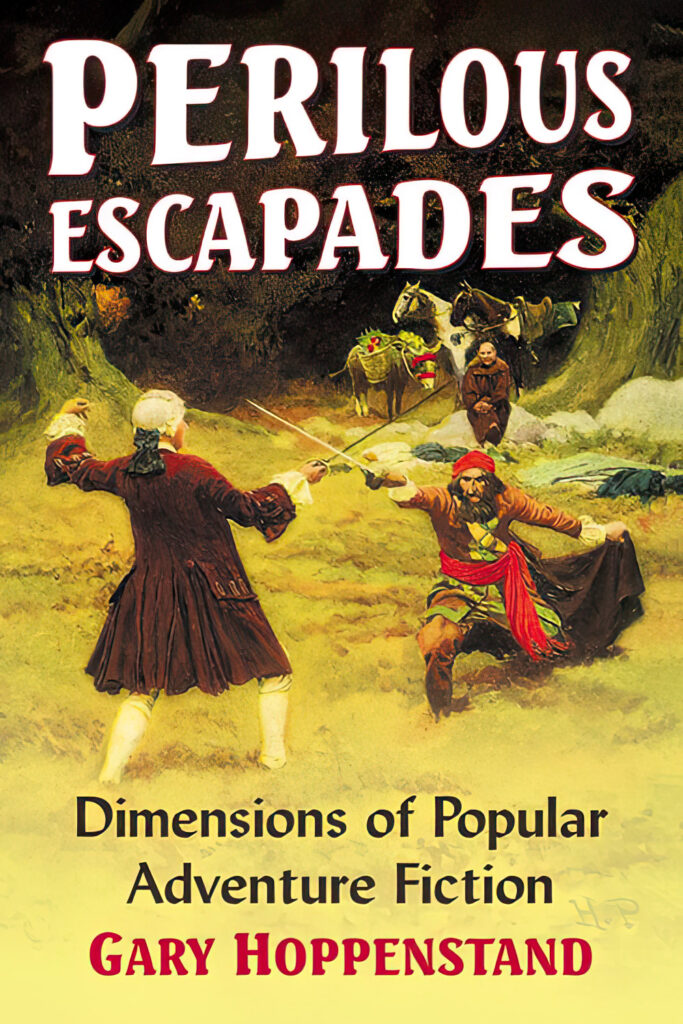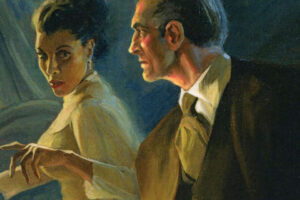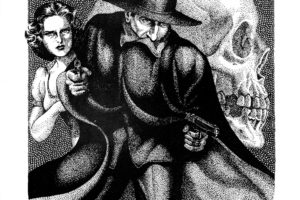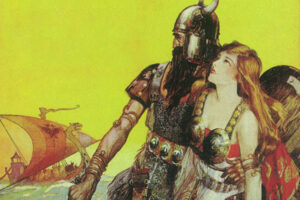An interesting volume I got recently is Perilous Escapades, published by McFarland in 2018. Subtitled “Dimensions of Popular Adventure Fiction,” it’s a collection of 15 non-fiction pieces by Gary Hoppenstand that appeared elsewhere.
 Hoppenstand is a professor of English at Michigan State University, and a product of Bowling Green State University’s Popular Culture Program. He wrote or edited a few works from the Popular Press, some of which I’ve reviewed here, and this is his latest book.
Hoppenstand is a professor of English at Michigan State University, and a product of Bowling Green State University’s Popular Culture Program. He wrote or edited a few works from the Popular Press, some of which I’ve reviewed here, and this is his latest book.
As noted, the focus of this volume is popular adventure fiction, which was a major genre of the pulps. While most of the pieces here aren’t specifically on pulp adventure, a few are, I think many would enjoy the rest of them. Most were written as intros or afterwards for reprints of such fiction by Penguin Classics, Signet Classics, or Bison Books. Bison Books has actually reprinted quite a lot of classic science fiction and fantasy works, several from the pulps, in their “Bison Frontiers of Imagination Series.”
The introduction gives a good overview of popular adventure, touching on authors such as Daniel Defoe, Arthur Conan Doyle, Johnston McCulley, Edgar Rice Burroughs, H. Rider Haggard, Rafael Sabatini, Tom Clancy, Clive Cussler, Sax Rohmer, and more. This was reprinted from The Guide to United States Popular Fiction (2001).
For the clearly pulp related, we get pieces on Rafael Sabatini’s Captain Blood (which was first serialized in the British Premiere Magazine and reprinted in Adventure magazine before being published in book form) and Scaramouche (not published in the pulps), C. J. Cutcliffe Hyne‘s “The Lost Continent” (from Pearson’s Magazine and reprinted in Famous Fantastic Mysteries), and Robert E. Howard‘s “The Treasures of Tartary.”
I’ve seen the movie version of Captain Blood and parts of Scaramouche. So both works were enlightening.
Hyne’s “The Lost Continent” is one I’ve long been aware of, but have yet to read. It was interesting to learn more about the author and his other works which are largely ignored today. I need to look into that further.
Borderline works I think folks would be interested in include items on Robert Louis Stevenson‘s The Black Arrow, Baroness Orczy‘s The Scarlet Pimpernel, Anthony Hope‘s The Prisoner of Zenda, Edwin L. Arnold‘s Lt. Gulliver Jones, A.E.W. Mason‘s The Four Feathers, and P.C. Wren‘s Beau Geste. The last two authors had other works published in the pulps. One piece contrasts the concept of the “scientist adventurer” between Conan Doyle’s The Lost World and Crichton‘s Jurassic Park.
I actually read The Scarlet Pimpernel, The Prisoner of Zenda, and Gulliver Jones in high school. I think too many people are unaware of the impact the Scarlet Pimpernel has on the hero genre, as many of the ideas here were picked up in Zorro and others who followed. Zenda created the whole “Ruritania” genre that many have done works in. Even ERB did one, The Mad King. And one still has to wonder how much Gulliver Jones may have influenced ERB’s John Carter. The Four Feathers I’ve never read, but did watch the classic 1939 movie. And, for me, the military conflict was never the major point of the movie. Beau Geste, I only know by reputation. So the pieces on these were all interesting because I had good familiarity with them.
Another article examines a work from the early 1800s that I think most have never heard of: Robert Montgomery Bird‘s Nick of the Woods. This is a story I could see appearing in the dime novels or early pulps, but it appeared in 1837. Hugely popular in its time, it sets the tone for the lone “vigilante hero.” Its main character, Nick, dresses as a monster and hunts down and slays Indians, carving a cross on their bodies, all to avenge the murder of his family. Nick is really Nathan Slaughter, a Quaker by day. How many fictional characters does this remind you of? There are several revenge characters and several heroes who mark their victims. There are reprints available of this work for those wanting to check it out for themselves.
Overall, I enjoyed this collection. It’s one I will turn to in the future. The articles help me better appreciate all these works, some of which I’ve read, some I’ve only seen movie or comic book versions of. I see on his webpage that he is currently writing a book on the cultural history of popular adventure fiction for the University of Nebraska Press. That’s the home of Bison Books, so wonder if it will be coming from them? I look forward to it.




Your comments